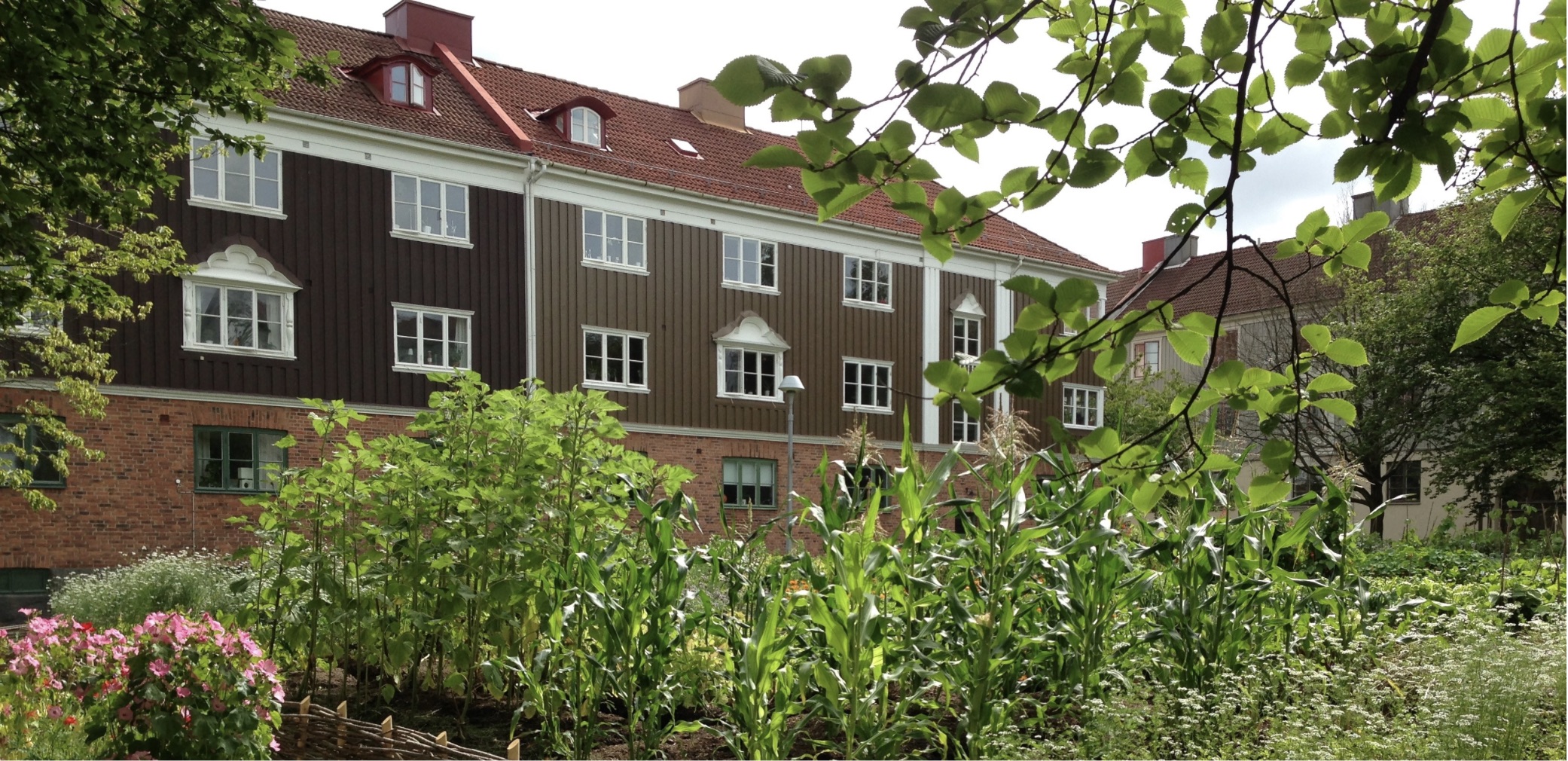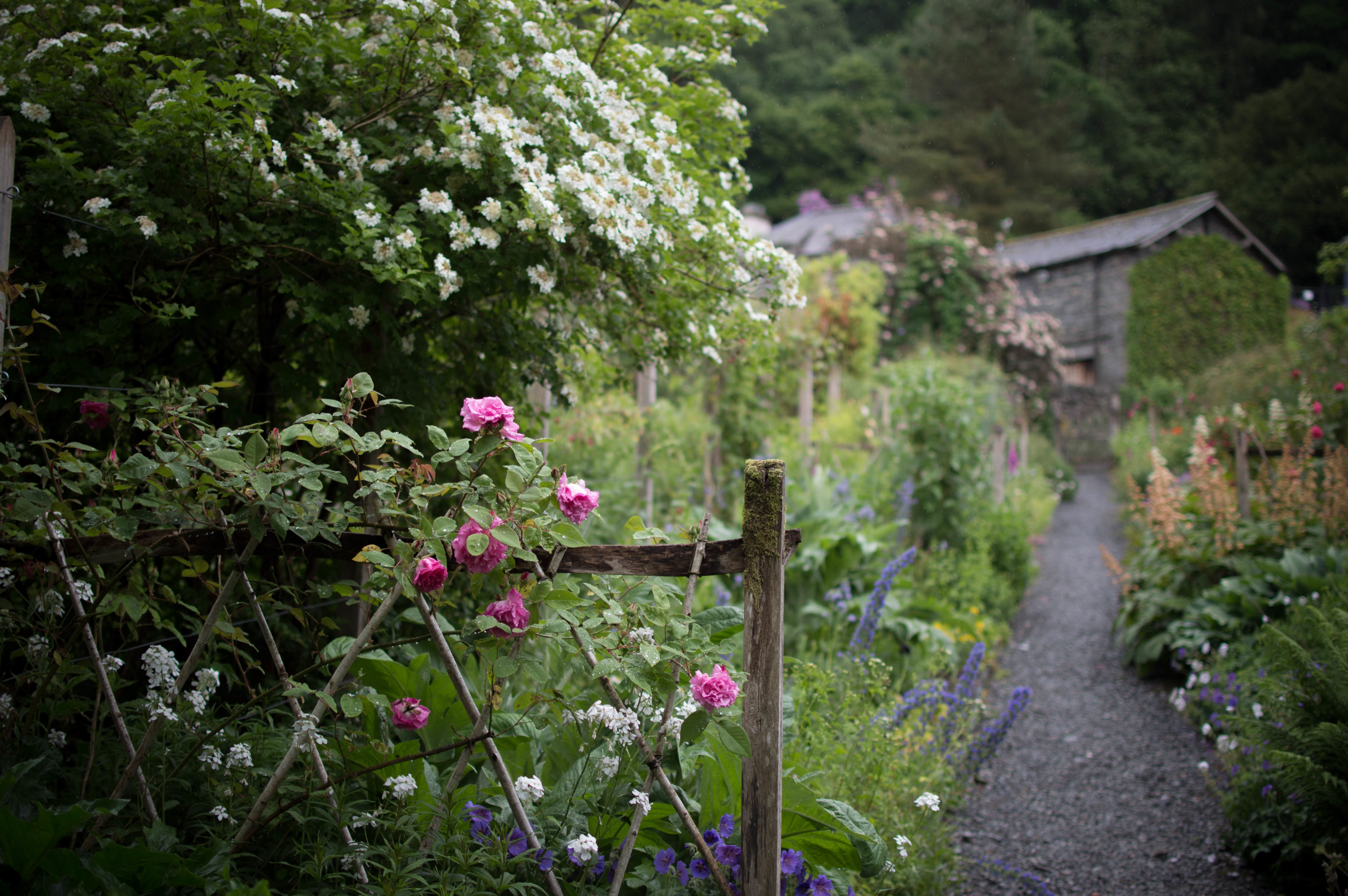Types of farms
SUSTAINABLE URBAN DEVELOPMENT THROUGH URBAN FARMING
Ecological and local urban farming can contribute positively to many of Gothenburg City's environmental objectives, such as poison-free environment, well-built environment, the promotion of biodiversity, reduced climate emissions to name a few. In addition, it contributes to both new jobs, reduced social exclusion and meetings between different ages and social backgrounds. Urban farming often aims to promote all three dimensions of a sustainable society; Ecological, social and economic.
Gothenburg's Green Strategy also describes how outdoor activities can give more synergies in the interaction between man and nature. It is mentioned that if we live in or have close access to green spaces, it may result in increased physical and mental health. Cultivation and agriculture therefore also need to be closer to where people live, both in the rural areas as well as in the city. This may lead to an increased understanding of the origine of food and the importance of organic farming.
THE MAP'S FIVE CATEGORIES AND TYPES OF FARMS:
1. COMMUNITY FARMS
Thousands of inhabitants of Gothenburg grow their own vegetables in community farms or in their residential area. These are run by growing associations of 10-100 members with the purpose of cultivating for community, recreation and own consumption. The size of a farming plot can range from a few pallets to smaller cultivation plots in the urban / residential area.

The property office of the city has been given a special assignment (since 2011) to support initiatives from culture-interested groups who want to start and implement cultivation projects in Gothenburg. " Urban cultivation" is the name of this venture that the property office of the city makes to stimulate small-scale and residential cultivation. So far, approximately 25 farming areas have been developed around the city. Here organsiations who want to start a cultivation project can apply for a contribution of up to 25,000 kronor. The contribution will stimulate and be part-financing of a joint project that deals with cultivation. Read more at: www.stadsnaraodling.se
2. COLONIAL GARDENS
The colonial gardens have a long history in Gothenburg and were inspired by the German colonial movement from the 1820s. The first colonies were built in 1903 with the aim of facilitating the cultivation of horticulture among ordinary workers and craftsmen in the city. Industrialization created the need for recreation and a feedback to the countryside. However, many colonial areas were demolished in connection with housing construction in the 1960s, but we still have some colonial gardens over 100 years old, such as the Slottskogskolonin, Änggårdskolonin and Örgryte koloniträdgård (all included on the map of Grow Gothenburg).

COLONIAL & GARDEN ORGANISATIONS
The mission of the property office of the city is to develope new and existing cultivation and colony areas in Gothenburg. In total there are approx. 22 colony areas in Gothenburg with a total of around 3,000 colonilots with a single booth of between 15-60 sq.m. and a garden area of 200-1000 sq.m. In addition to colony gardens, there are also 43 cultivation areas around the town with cultivation plots of approx. 100 sqm. The City of Gothenburg rent (leases) the land to the respective growers association, which in turn gives the lottery to its members. A cultivation lot costs about SEK 500 per year for rent. The cost includes rental and membership fee as well as other costs the association has. Most of the areas have a common community cottage and in about a quarter of the areas there is also the possibility of having a private storage room or a separate greenhouse.
3. SOCIAL FARMS
In Gothenburg there are a variety of farms and social farms run by associations or social work cooperatives for the purpose of engaging, educating or rehabilitating. Some of the more famous are Stadsjord who introduced the city pigs in Gothenburg in 2009 - and now also showcases the future's fish and vegetable cultivation (Aquaponics) in the Slakthuset. We also have social work cooperatives like Lärjeåns Gardens, Ängås Gård, Björlanda Prästgård, and others. Which employs people outside the labor market through their business of producing, refining and selling urban food. Then there are also 4H farms and other activities with semiurban animal husbandry dating back to the 80s and 90s. In total, the social urban land uses / employs hundreds of people, who in this way get a way into the labor market.

4. COMMERCIAL FARMS
More and more people demand locally produced and organic food and only in recent years a dozen new small scale enterproses s have picked up to meet this demand. There are also organic farms that have started since the 80's. Commercial urban agriculture aims to produce food on a slightly larger scale for sale, which facilitates the growers to feed on their work. Commercial urban agriculture now provides a dozen employees. In addition to vegetables, fruit and berries, it grows from sponges to bees (honey) and organic meat in the city of Gothenburg. Many of these commercial farms are run by sk. "Community Supported Agriculture" (CSA) where the customer buys a share of this year's harvest at the beginning of the season, thus sharing financial risks with the farmer. In this way, there is also a more direct contact between producer and consumer.